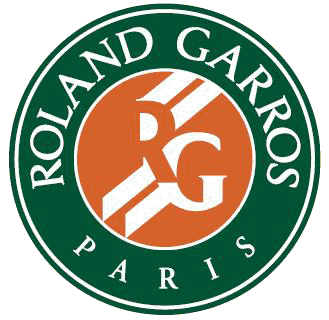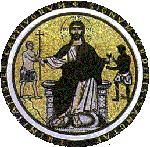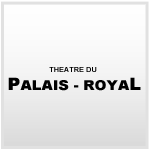Hier, Rafael Nadal a remporté son septième succès en Grand Chelem, mettant fin aux Internationaux de France de Roland Garros qui, depuis 15 jours animent la vie sportive parisienne. Cet évènement remplit les hôtels parisiens et sonne le début de la saison touristique ; D’où la difficulté pour de nombreux touristes de trouver une chambres d’hôtel à Paris pendant Roland Garros. Le Mathurin, n’était pas en reste et a affiché complet pendant ces 15 jours. A ce titre, le tournoi mérite bien quelques mots ici !
 Roland Garros, ce lieu festif et électrisé, me semble, en effet, respecter magistralement les trois règles du théâtre antique : unité de lieu, d’action et de temps. Voilà donc la plus grande compétition mondiale de tennis sur terre battue ! Certes, le design provisoire de certains happy few invités par les marques commerciales ayant leur loge attitrée sur le court central, manque singulièrement de discrétion, mais ne boudons pas notre plaisir et admirons ces sportifs de haute volée qui viennent tout risquer dans des combats précis et titanesques… que la télévision restitue fort bien. Mais, c’est en allant sur place que l’on hume vraiment l’atmosphère quasi sacrificielle des « balle(s) de match » ! Les arènes de Rome (que Néron faisait éclairer avec des chrétiens suppliciés en guise de torches) n’étant (heureusement) plus à la mode, ce sont, aujourd’hui, des tennismen de très haut niveau qui viennent jouer leur vie sportive, sociale et économique dans des affrontements violents que la taille de la balle jaune ne laisserait pas supposer. Car, au bout du combat, se trouve la gloire ou l’affront de l’anonymat, l’argent ou la retour à la vie tiède. Peu triomphent, beaucoup s’en remettent, certains sombrent. Tout cela se déroule au stade Roland-Garros avec ses 24 courts. Les trois plus grands sont le court central, le court Suzanne-Lenglen et le court n°1.
Roland Garros, ce lieu festif et électrisé, me semble, en effet, respecter magistralement les trois règles du théâtre antique : unité de lieu, d’action et de temps. Voilà donc la plus grande compétition mondiale de tennis sur terre battue ! Certes, le design provisoire de certains happy few invités par les marques commerciales ayant leur loge attitrée sur le court central, manque singulièrement de discrétion, mais ne boudons pas notre plaisir et admirons ces sportifs de haute volée qui viennent tout risquer dans des combats précis et titanesques… que la télévision restitue fort bien. Mais, c’est en allant sur place que l’on hume vraiment l’atmosphère quasi sacrificielle des « balle(s) de match » ! Les arènes de Rome (que Néron faisait éclairer avec des chrétiens suppliciés en guise de torches) n’étant (heureusement) plus à la mode, ce sont, aujourd’hui, des tennismen de très haut niveau qui viennent jouer leur vie sportive, sociale et économique dans des affrontements violents que la taille de la balle jaune ne laisserait pas supposer. Car, au bout du combat, se trouve la gloire ou l’affront de l’anonymat, l’argent ou la retour à la vie tiède. Peu triomphent, beaucoup s’en remettent, certains sombrent. Tout cela se déroule au stade Roland-Garros avec ses 24 courts. Les trois plus grands sont le court central, le court Suzanne-Lenglen et le court n°1.
Tout avait commencé en 1927 quand Jacques « Toto » Brugnon, Jean Borotra, Henri Cochet et René Lacoste réussirent l’exploit de conquérir la Coupe Davis sur le sol américain. Pour la revanche, en 1928, à Paris, l’événement réclamait un cadre à la mesure de son retentissement. Le Stade Français cédait alors à la Fédération de Tennis un terrain de trois hectares, situé Porte d’Auteuil, pour y construire un stade flambant neuf. Le club ne posait qu’une seule condition : que l’enceinte porte le nom de Roland Garros, un de ses membres, pionnier de l’aviation, décédé dix ans plus tôt. Puis, au début des années 80, Roland-Garros devint un des tout premiers lieux mythiques du tennis mondial. Les succès de Björn Borg, Noah, Ivan Lendl, Mats Wilander ou Gustavo Kuerten allaient écrire le livre d’or des Internationaux de France. Les femmes apportèrent leur pierre à l’édifice, telles Chris Evert, Martina Navratilova, Steffi Graf ou Monica Seles. Les actuels ténors de la terre battue parlent plutôt la langue de Cervantes. Qu’ils soient de nationalité espagnole ou argentine, à l’image du gaucher Rafael Nadal, maintenant quintuple tenant du titre. Vivement l’année prochaine !
The tenors of Tennis
Yesterday Rafael Nadal won his seventh Grand Slam final, bringing an end to the French Open which has animated the Parisian sporting scene for the past fortnight. This event always fills up the hotels of Paris and announces the beginning of the tourist season, hence the difficulty for many tourists to find a hotel room in Paris during Roland Garros. The Mathurin was no different and was fully booked throughout the two weeks. While we are on the subject, I think that the tournament definitely deserves a few words here!
Indeed it seems to me that Roland Garros, this festive event with its electric atmosphere, entirely respects the three rules of ancient theatre: the unity of time, place, and action. It is the world’s biggest clay court tennis tournament! It is true that the temporary design of the lucky few invited by the brands with their private box overlooking the central court is singularly lacking in discretion, but let’s not allow this to spoil our fun and let’s admire these top-class sportsmen and women who come to risk all in these precise and titanic combats… that the television manages to relay very well. But, it is only by being present in person that you really get a taste of the almost sacrificial atmosphere of a match point! Since the arenas of Rome (which Nero lit up using tortured Christians as human torches) are (thankfully) no longer in fashion, today it is world class tennis players who come to play out their sporting, social and economic lives in violent confrontations that the size of the yellow ball does not let us guess at. Because, at the end of the combat is glory or the affront of anonymity, money or a return to everyday life. Few triumph, many return to the practice courts, and some fall by the wayside. All this takes place at the Roland-Garros stadium with its 24 courts, the three biggest being the central court, the Suzanne-Lenglen court and court n°1.
It all began in 1927 when Jacques « Toto » Brugnon, Jean Borotra, Henri Cochet and René Lacoste managed to win the Davis Cup on American soil. For the following year, in 1928 in Paris, the event needed a setting worthy of the occasion. So the Stade Français gave the Fédération de Tennis three hectares of land, near Porte d’Auteuil, on which to build a brand new stadium. The club stipulated only one condition: that the stadium be named after Roland Garros, one of its members, a pioneer of aviation, who had died ten years earlier. Then, in the beginning of the 80s, Roland-Garros became one of the first legendary venues of world tennis. The wins of Bjorn Borg, Noah, Ivan Lendl, Mats Wilander and Gustavo Kuerten would write the story of the French Open. And the ladies also brought their stone to the edifice, such as Chris Evert, Martina Navratilova, Steffi Graf and Monica Seles. The current stars of the clay court tend to speak the language of Cervantes, whether they are Argentinean or Spanish, like the left-hander Rafael Nadal, who has know won the title five times. Roll on next year!
Didier MOINEL DELALANDE






